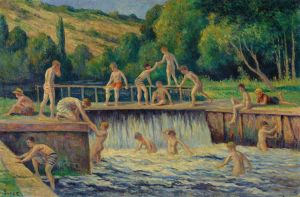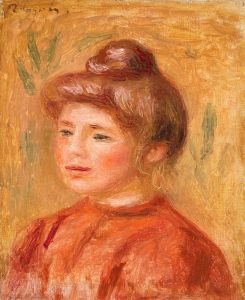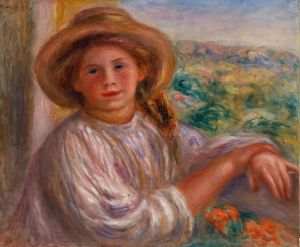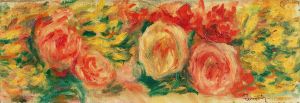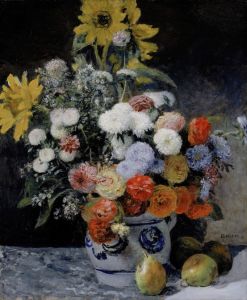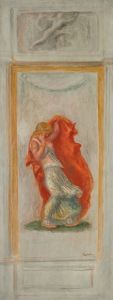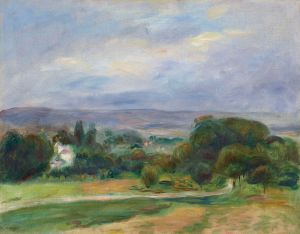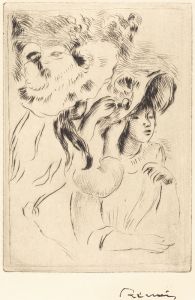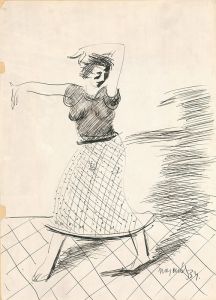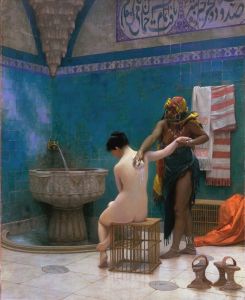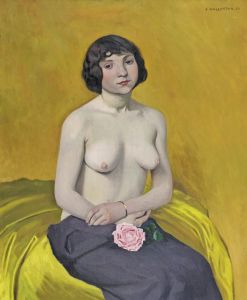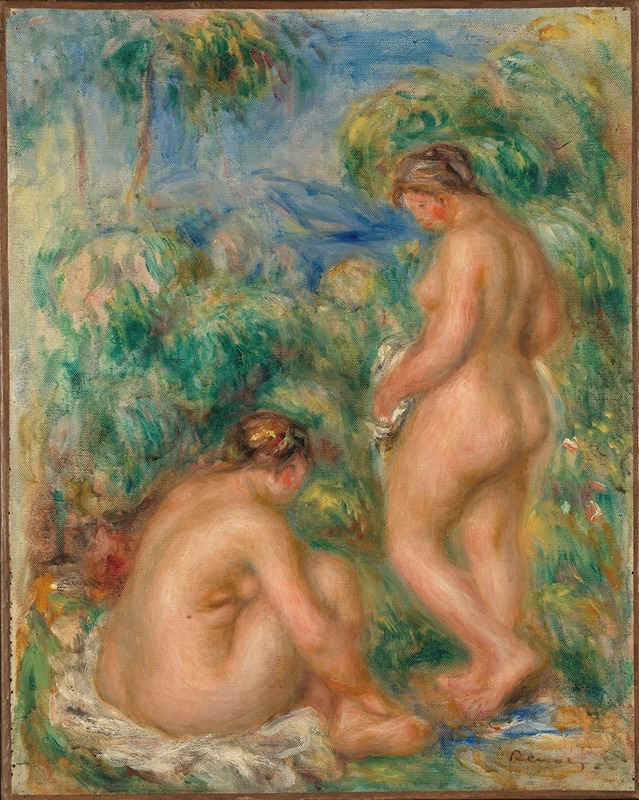
Bathing women
A hand-painted replica of Pierre-Auguste Renoir’s masterpiece Bathing women, meticulously crafted by professional artists to capture the true essence of the original. Each piece is created with museum-quality canvas and rare mineral pigments, carefully painted by experienced artists with delicate brushstrokes and rich, layered colors to perfectly recreate the texture of the original artwork. Unlike machine-printed reproductions, this hand-painted version brings the painting to life, infused with the artist’s emotions and skill in every stroke. Whether for personal collection or home decoration, it instantly elevates the artistic atmosphere of any space.
Pierre-Auguste Renoir's Bathing Women (French: Baigneuses) is a notable work by the French Impressionist painter, created during the later period of his career. Renoir, known for his vibrant use of color and depictions of the human figure, frequently explored themes of leisure, nature, and the female form. This painting is one of several works in which Renoir revisited the subject of bathers, a recurring motif in his oeuvre.
The painting reflects Renoir's fascination with the classical tradition, particularly the representation of the nude in art history. In Bathing Women, Renoir combines his Impressionist roots with a more sculptural and idealized approach to the human body, a style that became more pronounced in his later years. The figures in the painting are often characterized by their soft, rounded forms and a sense of harmony with their natural surroundings. Renoir's use of warm, luminous colors and fluid brushstrokes enhances the sensuality and vitality of the scene.
Renoir's interest in the theme of bathers was influenced by his admiration for earlier masters such as Titian, Rubens, and Ingres, who also celebrated the beauty of the nude. However, Renoir's interpretation is distinct in its emphasis on light, atmosphere, and the interplay between the figures and their environment. The idyllic setting of Bathing Women evokes a timeless, pastoral quality, aligning with Renoir's desire to create art that was joyful and free from the complexities of modern life.
The exact date of creation for Bathing Women is not always specified, as Renoir produced multiple works with similar themes over several decades. However, many of his bather paintings are associated with the late 19th and early 20th centuries, a period during which Renoir shifted away from the more spontaneous techniques of early Impressionism toward a more structured and classical style.
Renoir's Bathing Women is housed in various collections, as he created numerous versions of this theme. Some are in private collections, while others are held by major museums around the world. The painting exemplifies Renoir's enduring interest in the human form and his ability to merge classical influences with the innovations of Impressionism.
This work continues to be celebrated for its beauty and its role in bridging the gap between traditional and modern approaches to art.







